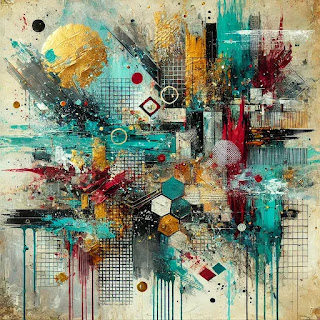The art market in India has been experiencing significant growth and diversification, fueled by increasing interest from collectors, investors, and enthusiasts.
Key Highlights
 |
| ART MARKET PLACE |
1. Market Growth
- The Indian art market reached a value of ₹ 1,145.5 crores (approximately $144.3 million) in FY2023, reflecting a 9% increase from the previous year. A total of 3,833 artworks were sold, with the average price per piece rising slightly to ₹ 29.9 lakhs.
- In 2024, sales by top artists surged, with the cumulative value of the top 50 artworks tripling since 2021 to ₹ 252.61 crores. High-value transactions, exceeding ₹ 1 crore per artwork, reached unprecedented levels.
2. Popular Art Forms
- Paintings dominate the market, accounting for the majority of sales, but there is a growing interest in sculptures and digital art forms. This diversification is attracting a broader audience.
3. Key Artists and Trends
- Renowned artists like Anish Kapoor and Gulam Mohammed Sheikh are leading the market. Emerging artists such as Raghav Babbar are also gaining recognition, showcasing a dynamic and evolving art scene.
4. Investment Potential
- Art is increasingly seen as a stable investment, with rising average prices and high sell-through rates (over 90% in 2023). Many buyers view art as a hedge against inflation and market volatility.
5. Auction Houses and Digital Expansion
- Auction activity is on the rise, with platforms like AstaGuru at the forefront. The use of online platforms and digital marketing has enhanced the accessibility and visibility of Indian art on a global scale.
If you need specific data on artists or auction houses, please let me know.
Here’s a detailed overview of the Indian art market based on the most recent reports:
Key Figures for FY 2023 and 2024
1. Market Turnover:
- FY2023 turnover reached ₹1,145.5 crores (~$144.3 million), reflecting a 9% growth compared to the previous year.
- FY2024 sales from the top 50 artists amounted to ₹252.61 crores, a notable rise from ₹82.57 crores in 2021.
2. Volume and Pricing:
- Total artworks sold in FY2023 were 3,833, marking a 6% increase from FY2022.
- The average price per artwork in FY2023 was ₹29.9 lakhs.
- The entry point for the top 10 artists in FY2024 was ₹7.7 crores, up from ₹1.99 crores in 2021.
3. Top Artists and Their Sales:
- Anish Kapoor achieved sales of ₹79.9 crores in 2024, maintaining his position at the top for six years in a row.
- Gulam Mohammed Sheikh followed with ₹24.1 crores, securing the second spot.
- Raghav Babbar, at just 27 years old, made ₹12 crores, making him the youngest in the top 10.
4. Auction Highlights:
- FY2023 saw 132 auctions, which is an 11% increase from FY2022.
- AstaGuru was a notable auction house, leading with 28 of the top artworks sold.
Investment Trends
- Price Growth:
- The average lot price jumped from ₹17 lakhs in 2021 to ₹38 lakhs in 2024, representing a 124% increase.
- Art as an Asset:
- Art is increasingly viewed as a hedge against inflation and a reliable investment option.
Emerging Trends
- There is a growing interest in digital and contemporary art.
- Sculptures are becoming more popular, although paintings still dominate the market.
- Participation from younger artists and collectors is on the rise.



